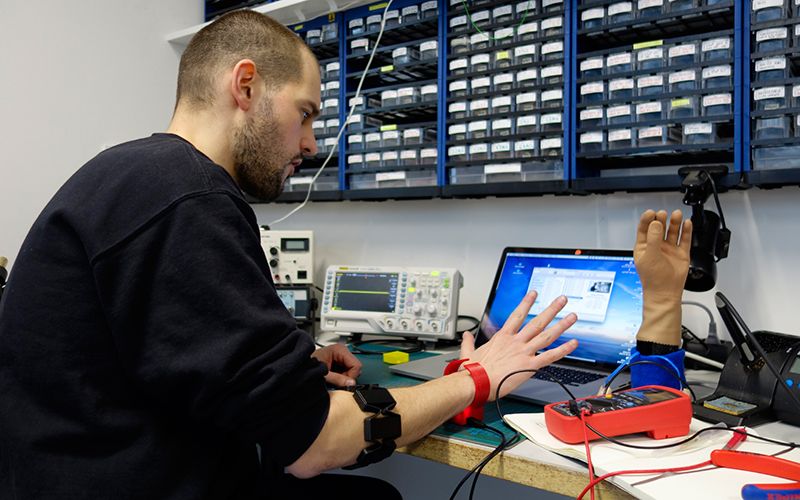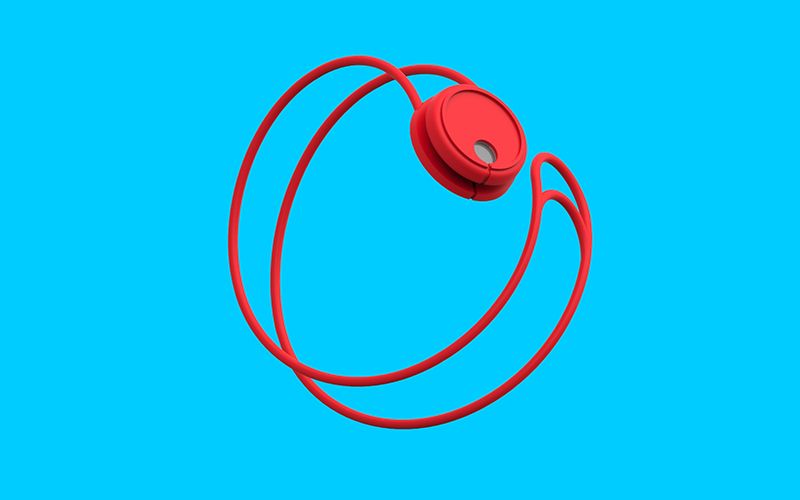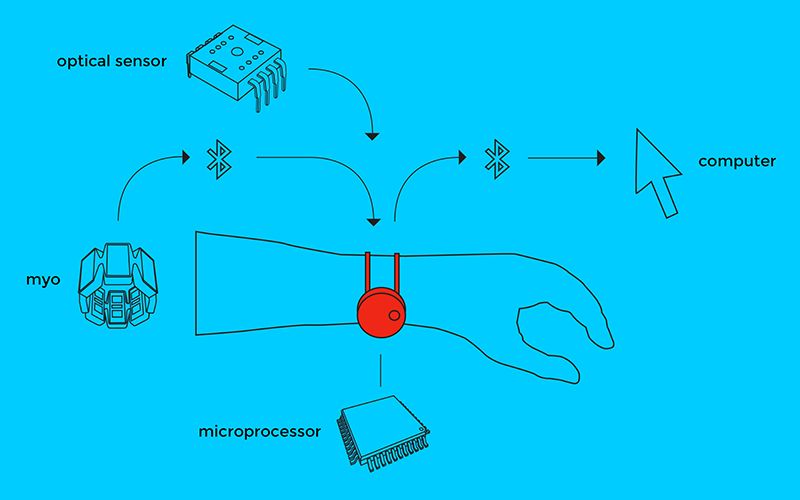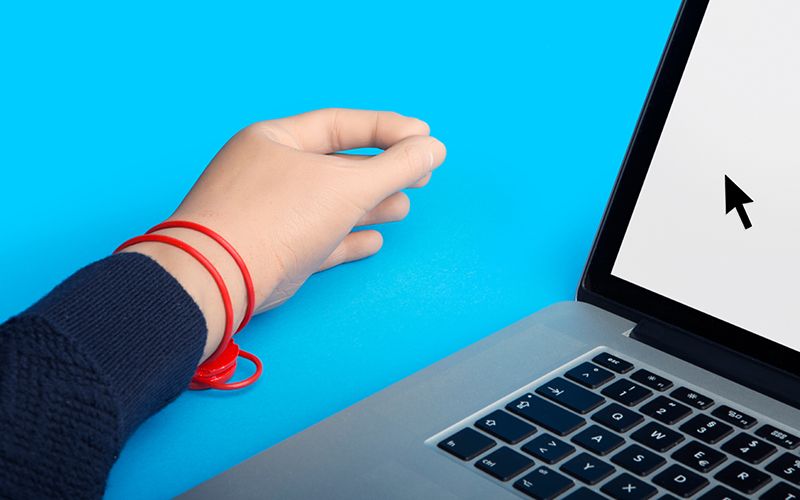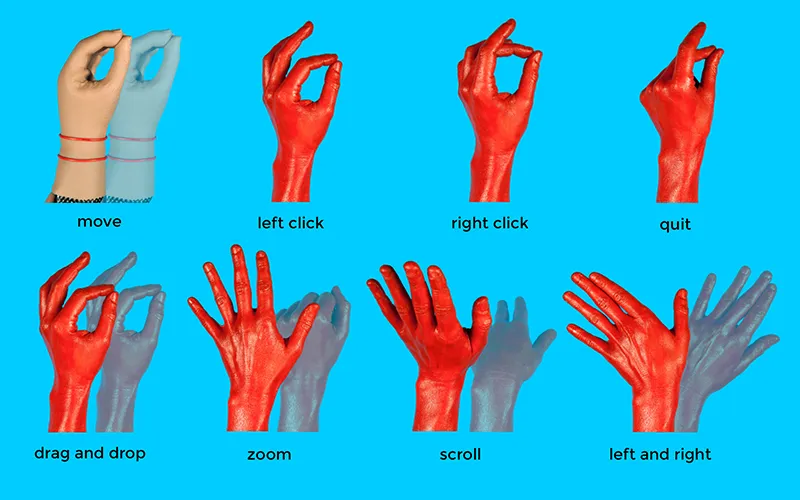This Digital Prosthesis Could Help Amputees Control Computers
Designers are developing a new device that tracks gestures in an amputated limb and translates them to computer commands, like scroll and click
Prosthetics are largely built to look and function like the limb they’re replacing. But it need not be so. Running prosthetics for lower-leg amputees are more like curved metal springs than the legs they replace. And now, a group of students in Germany are working on a digital hand prosthetic that will allow users direct control of a computer.
Operating a mouse or trackpad with a traditional prosthetic is challenging, enough so that the common practice is to learn to work with the opposite hand. David Kaltenbach, Lucas Rex and Maximilian Mahal, students of design at the Berlin Weissensee School of Art, have prototyped a new device that tracks gestures in an amputated limb and translates them to computer commands—scroll, click, right-click.
“If you’re in an office job, you have to deal with computers, and if you’re missing your hand … then it’s obviously very inconvenient to use a desktop computer, and there’s no real solution to that,” says Rex.
Most upper extremity amputations are due to work injuries, and most of those are in a job that relies on the hands, says Uli Maier, a certified prosthetist and orthotist at Ottobock, a German company that produces prosthetics. “If you lose them, you’re out of your job, so you have to change your life totally. And you have to find a job where you can work with one hand, and these jobs are mostly in offices,” says Maier. “Just try to work one day with only one hand on your computer and you will see what I’m talking about.”
Maier visited the class that Kaltenbach, Rex and Mahal were a part of, lecturing on prosthetics and Ottobock’s programs. He helped the students conceive of the project, which they call Shortcut, based on his experience as a technician in patient care. “This is necessary for amputees of the upper extremities, and the things existing on the market are horrible,” says Maier.
The Shortcut consists of two parts. An optical sensor, like the one on the underside of a mouse, is housed in a wristband that goes around a normal prosthetic. Like a mouse, it tracks movement in relation to a tabletop, and translates it to the cursor. Myoelectric sensors, mounted on the residual limb, track the small voltages that travel down the remaining nerves. It’s a bit like how amputees can still feel the hand they do not have; after amputation, your brain can still send signals to clench, pinch, twist, and more. A microcontroller housed in the bracelet runs code to translate particular movements—touching a thumb to pointer finger, for example, or flexing a hand back—into outputs, such as scroll, zoom, drag and drop, and more, and then the device communicates that to a computer via Bluetooth.
There’s actually a whole category of myoelectric prosthetics already—it’s sort of the standard for higher-end electric prosthetics. The sensors work the same way, but they instead control the prosthesis itself, running electric motors to grasp the fingers or rotate the wrist. There are also other methods of computer interface, from voice activation and transcription (with programs like Siri and Dragon) to brainwave computer-control interfaces. These technologies are either designed for more specific scenarios, or still in the early stages.
“We’re not trying to rebuild what was there before, like make a bad replica of an organic hand,” says Rex. “Why not bypass the interface that was built for organic hands, and rather communicate to digital infrastructure directly?”
Kaltenbach, Rex and Mahal are still in the prototyping phase. A 3D-printed housing contains off-the-shelf components, all of which would have to be redesigned to fit into a much smaller bracelet. Currently, the students are participating in the DesignFarmBerlin accelerator, and working to refine the gesture catalog and make it smaller and more precise. Maier has shared the idea around Ottobock, and says there are lots of amputees excited to try it out. One day, such technology might appear in a traditional prosthesis, as one of its many functions.
